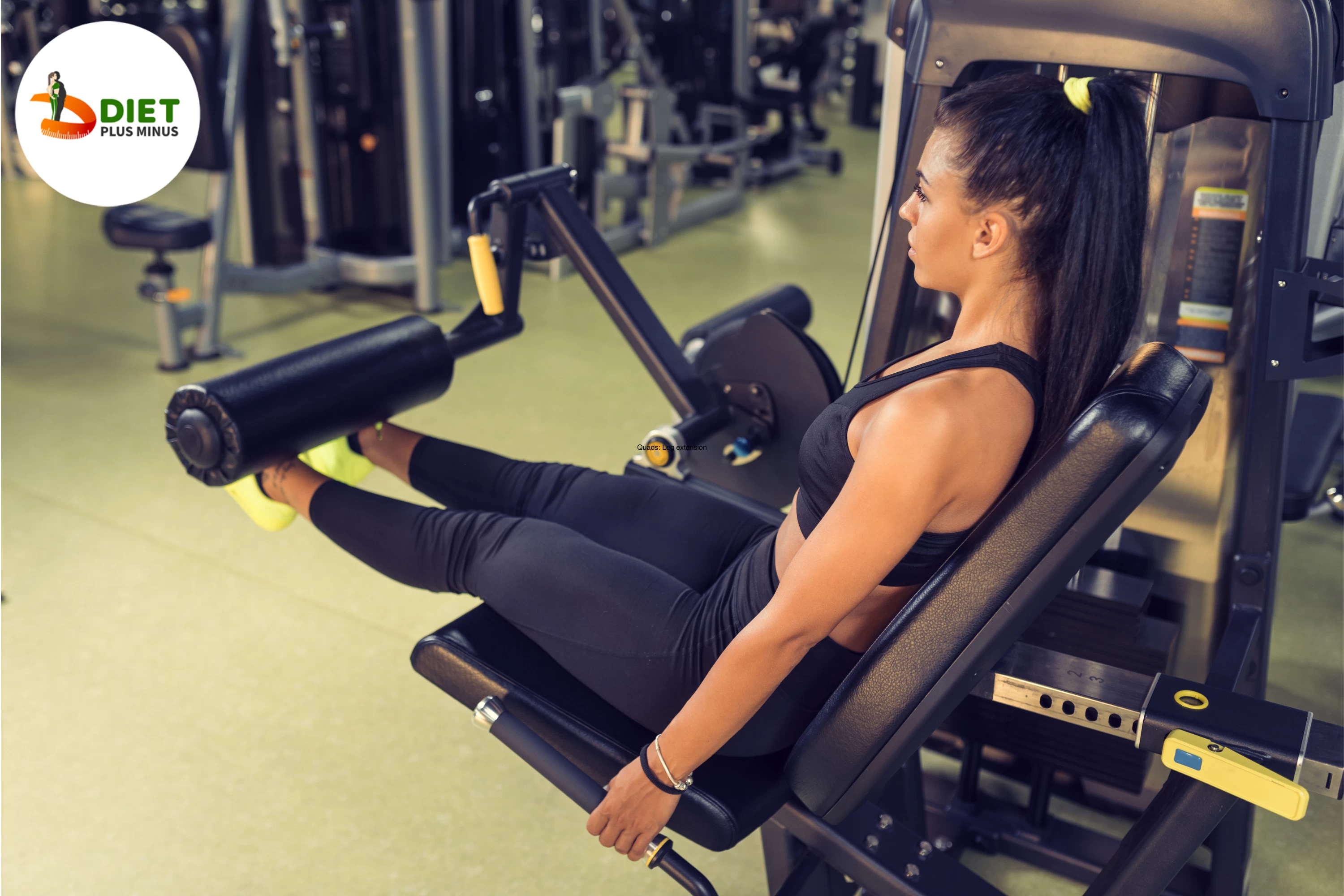Quads: Leg extension

What are quads?
Quadriceps are four large muscles in the front of the thigh. They have two vastus medialis, one vastus lateralis, and one rectus femoris. They maintain posture and knee extension. Walking and running stabilise the knees with the quads.
Dumbbell or barbell squats and lunges strengthen these muscles. Wall sits, step ups, and leg extension machines can also strengthen this area. Your lower body will gain strength and stability from a variety of exercises, especially for running and jumping.
Anatomy of the Quads
Quadriceps are four large muscles on the front of the thigh. Walking, running, and jumping depend on these knee-extending muscles. The quads consist of the rectus femoris, vastus lateralis, intermedius, and medialis.
The front-center rectus femoris muscle runs from the hip to the knee. It straightens your leg when you move it. The vastus lateralis runs from your hip to your knee on your outer thigh. Moving your leg away from your body helps extend both joints. The vastus intermedius and medialis are underneath them on either side of your thigh bone (femur). After bending your leg 90 degrees or more, they help extend both joints.
Exercises to Strengthen Leg Extension
Leg extensions strengthen your quadriceps. Leg extensions involve the rectus femoris, vastus lateralis, and vastus medialis. Start a leg extension with your knees bent and feet flat on the platform. Slowly extend your legs straight in front of you and slowly return them to their starting position. This exercise works best with your back against the seatback.
Ankle weights, higher weight stacks, or weight plates on fixed-weight machines can increase leg extension resistance. To challenge yourself and work different quads, slow or speed up each rep. You can also perform leg extensions by pointing your toes towards or away from you to target different quads muscles for better conditioning and strength gains.
Repetitions and Sets
Repetitions and sets are how many times and cycles you do an exercise. Repeating quadriceps leg extensions with a bent knee is a repetition. One set is 15 repetitions. Repetitions and sets vary by fitness level and goal.
Two to three sets of 12-15 reps will tone legs. Four to five sets with 8-12 reps build strength better. It's also important to rest between sets—usually 30 seconds or 1 minute—to let muscles recover before starting another set. Leg extensions, like all exercises, should be done properly for maximum benefit and safety.
Proper Form & Breathing Techniques
Leg extension form and breathing are crucial. First, adjust the machine's seat height so you can reach the handles while sitting with your back against the backrest. Flatten your feet on the footplate and extend your legs in front of you. To avoid knee hyperextension, keep your legs slightly bent at the top.
Safe and effective exercise requires breathing. As you extend your legs, exhale and inhale slowly. This will help you maintain control throughout each repetition and avoid momentum or jerky movements that can strain your muscles and joints. Holding your breath while exercising can lead to neck and shoulder injuries.
Benefits of Leg Extension Exercise
Quadriceps exercises strengthen and tone the front thigh muscles. This exercise works the quadriceps—rectus femoris, vastus medialis, vastus intermedius, and vastus lateralis. This exercise strengthens and stabilises legs. Strengthening core muscles and hip flexors improves posture and balance. Leg extension exercises strengthen quads, which can reduce lower back and hip pain. This low-impact leg workout is ideal for people with lower-body joint issues or injuries that prevent them from doing more intense workouts.
Conclusion
After your leg extension routine, there are several ways to strengthen this muscle group. Other equipment or variations of the same exercise can challenge and grow muscles. Resistance bands, ankle weights, and weight machines increase intensity and target different muscles. Single-leg extensions and angled platforms can also target quadriceps muscles. Stretching regularly after leg extension exercises prevents injury and aids recovery. To maximise flexibility and reduce post-workout soreness, stretch with dynamic and static stretches. By strengthening your leg extension exercises, you can workout effectively and safely while still getting results.
In Short:
Steps involved:
-
Place your back against the cushion of the machine and adjust the machine according to your height, such that your knees make 90o at the initial position.
-
Push the weights by extending your knees outwards, descend your legs to the initial position. Both the movements should be performed in slow and controlled motion.
Do’s:
-
Rotate the knees in direction to the axis of rotation of knees.
-
Focus more on the number of reps.
-
Try different variations so that all the thigh muscles are used.
-
Keep the tempo slow.
Don’ts:
-
Do not perform it with heavyweights as it can cause knee injury.
-
Do not use your knees to lift more weight.
